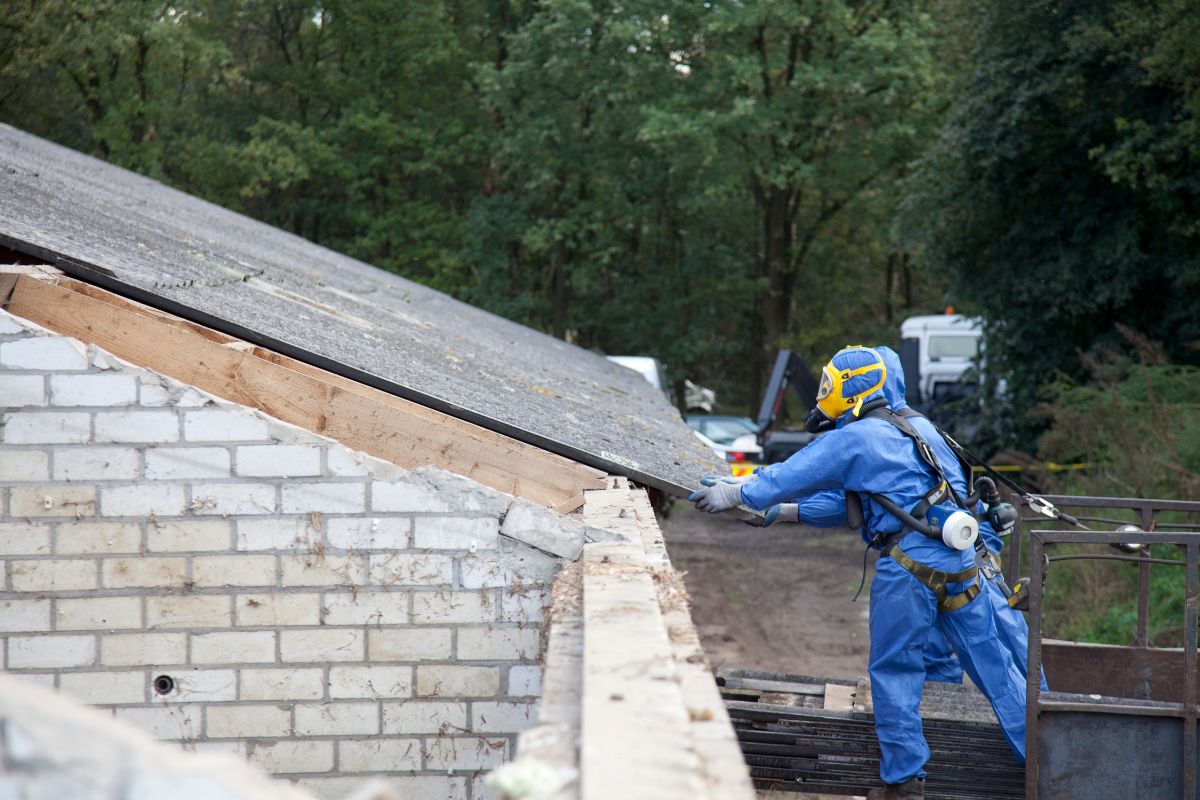Types of Asbestos and How to Identify Them: A Comprehensive Guide
Asbestos is a naturally occurring mineral that has been widely used in various industrial applications for much of the 20th century. Its heat resistance, durability, and insulating properties made it an attractive material for construction, automotive, shipbuilding, and many other industries. However, despite its many benefits, asbestos is now known to be highly hazardous to human health. Inhalation of asbestos fibers can cause serious diseases such as lung cancer, asbestosis, and mesothelioma.
Understanding the types of asbestos and how to identify them is crucial for homeowners, builders, and safety professionals. In this blog, we will explore the different types of asbestos, how to identify them, and the potential risks associated with each type.
What is Asbestos?
Asbestos is a group of six naturally occurring fibrous minerals that are resistant to heat, fire, and chemicals. These minerals are composed of thin, microscopic fibers that can be easily inhaled into the lungs if disturbed. Once inhaled, the fibers can cause severe damage to the lungs and other organs over time.
The Six Types of Asbestos
The six types of asbestos are divided into two categories: serpentine and amphibole. These categories are based on the mineral’s fiber structure.
1. Chrysotile (White Asbestos)
Chrysotile is the most commonly used form of asbestos and is also known as white asbestos. It is a serpentine mineral, meaning its fibers are curly and flexible. Chrysotile was widely used in construction materials such as insulation, roofing, and flooring due to its fire-resistant properties.
Common Uses
- Insulation for pipes, boilers, and furnaces
- Roofing materials
- Cement products (such as roofing tiles and pipes)
- Vinyl flooring
- Brake linings and gaskets
Identifying Chrysotile
Chrysotile asbestos fibers are fine and curly, and they tend to have a white, silvery appearance when viewed under a microscope. The material often appears in sheets or as a fine, fibrous mesh.
While chrysotile was the most commonly used form of asbestos in construction, its fibers are still hazardous if disturbed or damaged. It is important to note that chrysotile is often mixed with other materials, making it more difficult to identify without the help of a professional.
2. Amosite (Brown Asbestos)
Amosite, or brown asbestos, is an amphibole mineral characterised by straight, needle-like fibers. It is less flexible than chrysotile and is typically more brittle. Amosite was once used in industries that required strong heat resistance, such as in the construction of thermal insulation for buildings and pipes.
Common Uses
- Thermal insulation
- Cement products
- Insulation boards
- Steam pipes and boilers
Identifying Amosite
Amosite fibers are typically brown or dark gray in color and have a needle-like appearance. They are more brittle than chrysotile fibers and can break easily when disturbed. Amosite is commonly found in materials like insulation boards, cement, and some industrial products. If you encounter an older building or industrial setting with these materials, they could contain amosite.
3. Crocidolite (Blue Asbestos)
Description
Crocidolite, commonly known as blue asbestos, is one of the most dangerous types of asbestos due to its fine, needle-like fibers that are highly friable (easily broken into small particles). This type of asbestos is an amphibole mineral and was primarily used in applications requiring high heat resistance and strength.
Common Uses
- Insulation for steam engines
- Spray-on coatings
- Roofing materials
- Cement products
Identifying Crocidolite
Crocidolite fibers are typically blue in color and have a thin, needle-like structure. They are the most hazardous type of asbestos because the fibers are very fine and easily airborne, posing a higher risk of inhalation. Identifying crocidolite without professional tools can be challenging, but any blue-colored asbestos material should be considered dangerous.
4. Tremolite Asbestos
Tremolite is an amphibole asbestos mineral that is typically found in combination with other types of asbestos. While not widely used on its own, tremolite has been found as a contaminant in some asbestos-containing materials, including vermiculite insulation.
Common Uses
- Contaminant in vermiculite insulation
- Talc products
- Some building materials
Identifying Tremolite
Tremolite fibers are usually white to light gray and are typically found in mixtures with other types of asbestos. It is difficult to identify tremolite in products unless it is specifically tested for, as it is not commonly used as a standalone product.
5. Anthophyllite Asbestos
Anthophyllite is another type of amphibole asbestos, but it is relatively rare compared to the other forms. Like tremolite, anthophyllite is often found as a contaminant in other materials such as talc and vermiculite. It is not commonly used in manufacturing due to its lower heat resistance.
Common Uses
- Contaminant in talc and vermiculite
- Occasionally found in insulation and building materials
Identifying Anthophyllite
Anthophyllite fibers are typically brown or green and have a brittle texture. Like tremolite, anthophyllite is not often found in pure form but rather as a contaminant in other materials, making it hard to identify without professional testing.
6. Actinolite Asbestos
Actinolite is an amphibole asbestos that has very fine, brittle, needle-like fibers. It is extremely rare in commercial applications but can sometimes be found as a contaminant in other asbestos products or naturally occurring deposits.
Common Uses
- Contaminant in vermiculite
- Can be found in some construction materials
Identifying Actinolite
Actinolite fibers are typically dark green, though they can also appear light gray. Like anthophyllite and tremolite, actinolite is often found as a contaminant in other materials, which makes it challenging to identify without specialised knowledge.
Risks of Exposure to Asbestos
All types of asbestos, regardless of their appearance or composition, are hazardous when inhaled. The primary health risks associated with asbestos exposure include:
- Asbestosis: A chronic lung disease caused by inhaling asbestos fibers, which leads to scarring of lung tissue.
- Lung Cancer: Long-term exposure to asbestos can increase the risk of developing lung cancer.
- Mesothelioma: A rare and aggressive form of cancer that affects the lining of the lungs, abdomen, or heart.
- Pleural Disease: Asbestos exposure can lead to pleural thickening or plaques, which affect the lining of the lungs.
Even though chrysotile asbestos is more commonly used, the amphibole forms (amosite, crocidolite, tremolite, anthophyllite, and actinolite) are generally considered more dangerous due to their sharp, needle-like fibers that can easily penetrate lung tissue.
How to Identify Asbestos in Your Home or Workplace
Identifying asbestos in your home or workplace is not something you should attempt on your own without proper training or equipment. However, there are some steps you can take to determine whether asbestos may be present:
- Age of Building: Asbestos was widely used in construction before the 1980s. If your building was constructed before this time, there is a higher likelihood that it may contain asbestos materials.
- Common Asbestos Materials: If you find materials such as old insulation, floor tiles, roofing shingles, or cement sheets, they may contain asbestos. Look for these materials in areas like attics, basements, and crawl spaces.
- Hire a Professional: The safest way to identify asbestos is to hire a licensed asbestos inspector. These professionals can take samples of materials suspected of containing asbestos and have them tested in a laboratory.
What to Do if You Find Asbestos
If you suspect that your home or workplace contains asbestos, take the following steps:
- Do not disturb the material: Asbestos fibers are released when materials are disturbed. If you think you have asbestos-containing materials (ACMs) in your building, do not try to remove or repair them yourself.
- Hire a professional: An asbestos removal expert can safely assess and remove the material if necessary.
- Follow local regulations: Many areas have strict laws governing the removal and disposal of asbestos. Be sure to follow these guidelines to ensure the safety of yourself and others.
Conclusion
Understanding the types of asbestos and how to identify them is crucial for protecting yourself and others from the risks associated with exposure. While it can be difficult to identify asbestos without professional testing, awareness of the common types of asbestos and their uses can help you identify potential risks in your home or workplace. If you suspect the presence of asbestos, always consult with a licensed professional like Impact Site Services to ensure safe handling and removal.

